#eastern american native flowers
Text

Understory Garden - May 6th 2023
#this was such a good location#eastern american native flowers#nature#forest#wild columbine#phlox#foam flowers#solomons seal#dogwood in the back#original phography#photographers on tumblr#mt cuba#Delaware#spring
466 notes
·
View notes
Text
some art ❤️
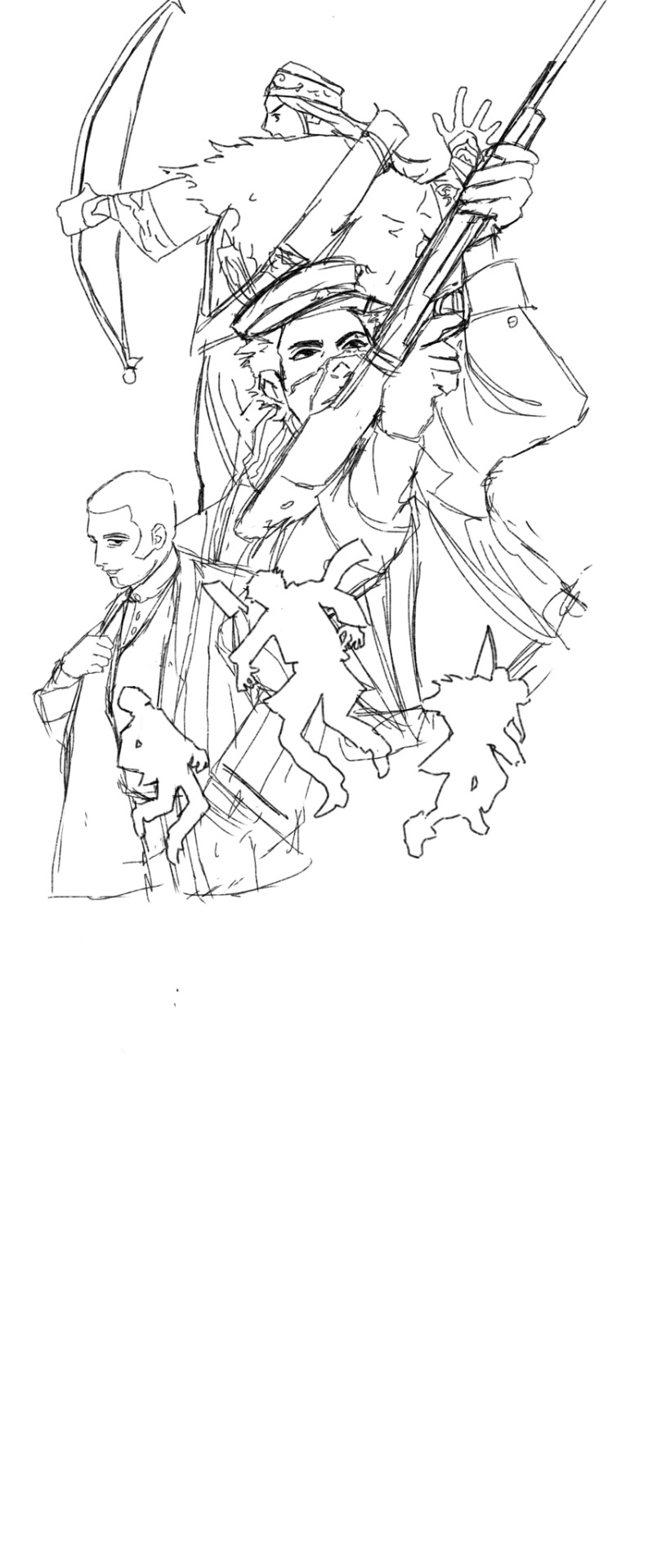
Designing my friend a Golden Kamuy Skateboard deck! Only have the sketch half way done so this is all i got at the moment.
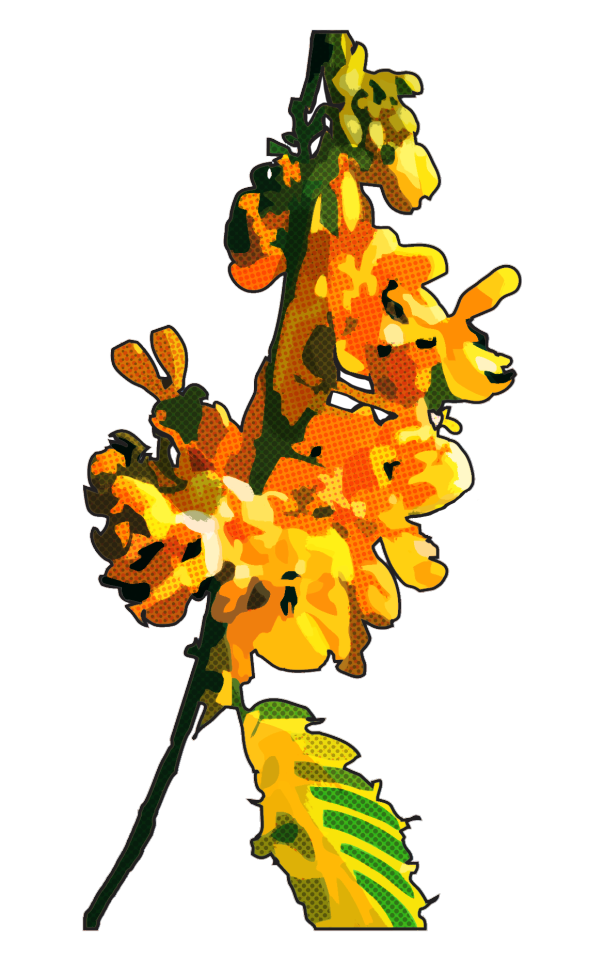
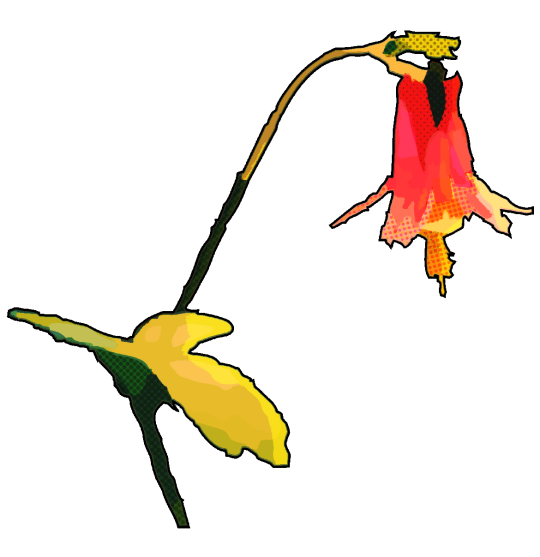
I’m working with Newfields’ horticulture department (also known as The IMA/The Indianapolis Museum of Art) to design some graphics of native Hoosier plants in their pollinator garden. The yellow flower is the American Senna and the pink one is the Eastern Red Columbine.
#art#artist#fanart#anime#manga#gay#ima#newfields#indianapolis museum of art#american senna#eastern red columbine#flowers#native plants#hoosier#plant native#pollinators#pollinator garden#golden kamuy#sugimoto saichi#saichi sugimoto#asirpa#shiraishi yoshitake#yoshitake shiraishi#skateboarding#skater
59 notes
·
View notes
Text
Succulents Part 7--Opuntia humifusa
Succulents are a wide variety of plants, spanning multiple orders. Some have succulent leaves while others have succulent stems. Cactuses are succulents, but not all succulents are cactuses. Defining what exactly makes a succulent is a little tricky. For example, cabbage leaves are considered by some to be succulent, but tulip and onion leaves apparently aren't.
All photos mine. Unedited.


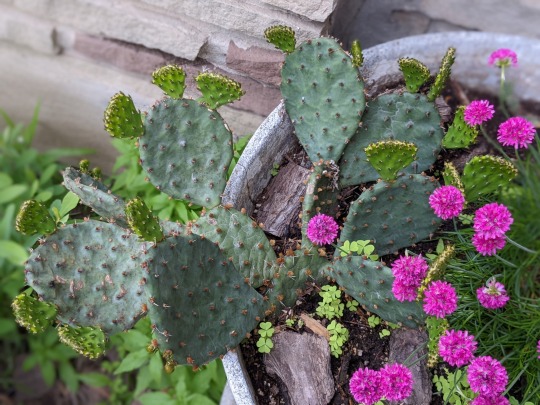












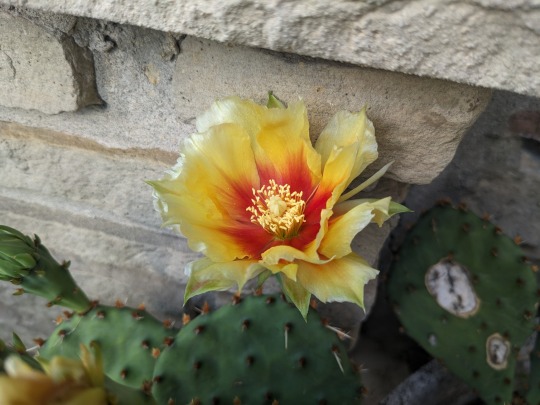





This is a single species post as it's the only opuntia I have photos on hand of (single specimen, rather, as this is all the same plant). Anyway, it's a succulent by virtue of being a cactus. I'm not even sure you really differentiate leaf from stem on a cactus. This cactus I've grown for several years now, and last summer was her first flowering season! I hope she does it again this year too. This species of cactus can be grown outdoors in Ontario and the rest of its native range since it is hardy to cold weather. :)
#succulent plants#succulents#flowers#my photos#photography#blackswallowtailbutterfly#yellow flowers#Opuntia humifusa#devil's tongue#garden flowers#cactus#cactus flowers#Opuntia#my garden#prickly pear#eastern prickly pear#native North American plant species
2 notes
·
View notes
Text
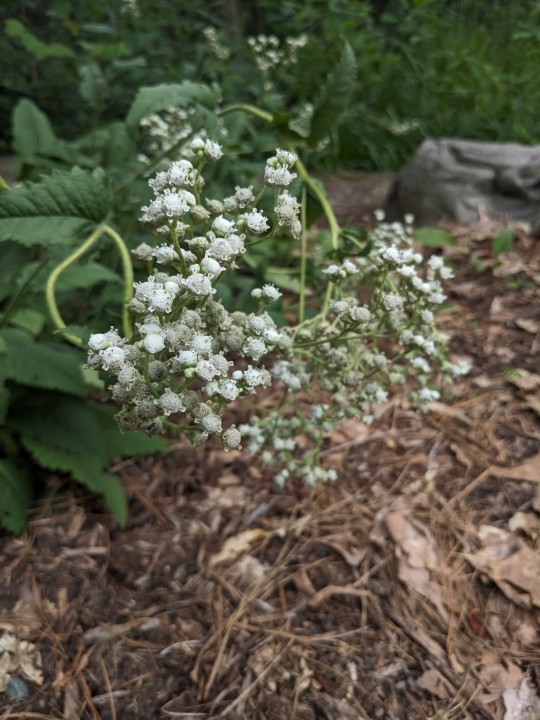
Parthenium integrifolium / Wild Quinine at the Sarah P. Duke Gardens at Duke University in Durham, NC
#Parthenium integrifolium#Wild Quinine#American feverfew#Eastern feverfew#Feverfew#Native plants#Native flowers#Nature photography#Flowers#Sarah P. Duke Gardens#Duke Gardens#Duke University#Durham#Durham NC#North Carolina
1 note
·
View note
Text
listen one of the major reasons i care so much about Arundinaria is that she's gotta be legit the most exciting rising star in the evolutionary world.
Flowering plants emerge like 100mil years ago, proceed to become the baddest bitches on planet earth with hundreds of thousands of species found in every environment.
from this lineage emerges the GRASS which, using the simple technologies of "Grow leafs from the bottom so the tops can get eaten and you can just keep a-goin'" and "Not die when stepped on" become the undisputed masters of the sunny and arid regions
From the lineage of the GRASSES. Emerges a grass that decides to step up its game and invent WOOD to become some sort of fucked up tree. This grass is known as WOODY BAMBOO and it kicks everybody's ass.
The woody bamboo is mostly thriving in Asia, but around 2mil years ago, a bamboo got LOST AS FUCK and accidentally went to NORTH AMERICA. It turns out the south-eastern part of North America is a downright luxurious climate for a bamboo and so the bamboo actually evolved into its own genus.
However, there was an ICE AGE that froze a bunch of North America and the bamboo was forced to a tiny edge of the Gulf Coast. Fortunately, the bamboo made a mutualistic symbiosis with HUMANS, which used controlled burning to create its ideal habitats in exchange for using the stems for a super-strong, versatile, flexible, water resistant material for literally everything. So basically it spread all throughout the Southeast of North America and formed its own habitat type, a bamboo forest environment known as a CANEBRAKE.
It's native North American bamboo, y'all. It's been reduced to 2% of its former extent and a lot of people don't even know it exists.
This plant is going places we can't let this shining streak of weird-ass plants with ideas just strange enough to work collapse because of a freak colonialism incident
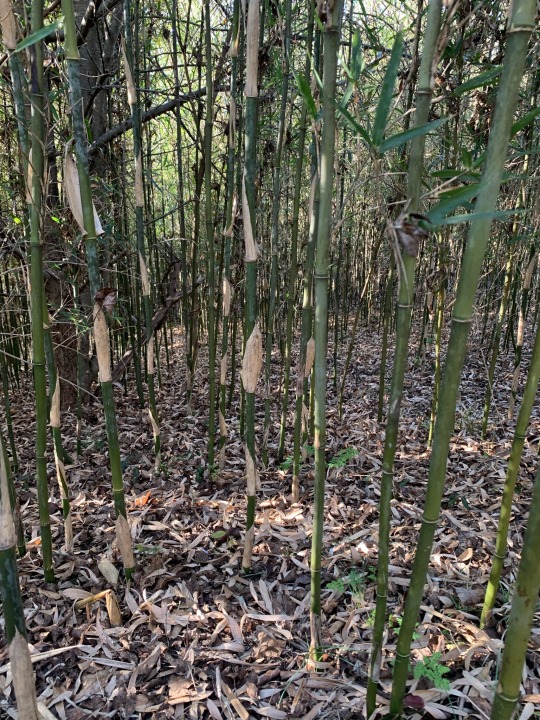
Arundinaria gigantea my absolute beloved
2K notes
·
View notes
Text
Everything You Need to Know About Veggies and Fruits: Cranberries
Cranberry (Vaccinium Macrocarpon)
*Kitchen *Medical *Feminine
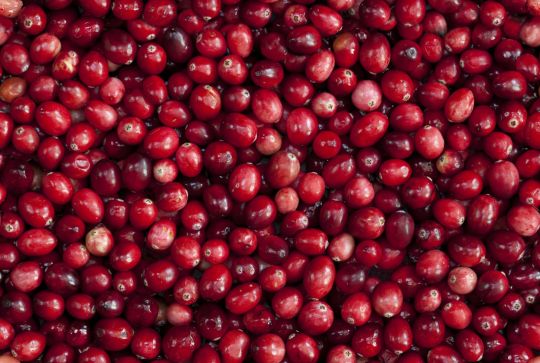
Folks Names: Bog fruit, Marshworts
Planet: Mars
Element: Water (juice), Fire (berry)
Deities: Astarte, Marjatta,
Abilities: Healing, Protection, Love, Lust, Positive Energy, Courage, Passion, Action
Characteristics: Native to Eastern North America and northern Asia. Small, slender, evergreen shrub growing to 1 ft with oval, dark green leaves, pink flowers and round/slightly pear-shaped red berries.
History: This jewel-toned gem of the bog is native to North America and a traditional food from Samhain through Yule. Its association with the American Thanksgiving meal is long rooted in tradition, but there is no historical evidence proving it was actually served at that first Thanksgiving celebrated by the Pilgrims. Despite this, cranberry something or other is commonly found on Thanksgiving and Christmas feast tables all across the United States, Canada, and the United Kingdom. Cranberry garlands made by stringing hundreds of the hard round red berries with a needle onto a long sturdy string is a traditional Christmas decoration. It is believed that cranberries got their name due to cranes always eating them and the blossoms of the berries look like the head of cranes. It is considered a sacred fruit in some indigenous circles such as Algonquian and Iroquois.
How to Grow:
Easy to Plant: Relatively
Rating: Moderate
Seeds accessible: Sometimes seasonal
How to Plant Cranberries
Video Guide
Where to Buy Seeds
Magical Properties
Can be used as a substitute for wine
Dried cranberries can be used in a charm to honor the wisdom of elders or as an offering to ancestors
It’s bright color signals energy, passion, courage, rejuvenation and rebirth
Can lend abundance, love and healing in kitchen spells
Since they are from the bog, it said to be feared by evil spirits and can offer protection
Placing a bowl of cranberries under one’s bed can restore depleted energy and cure an illness
Drinking the juice with your partner on a dark moon can keep your relationship free of trouble and continue to go strong
Can help link wisdom and guidance of ancestors
Can be utilized in energy cleansing rituals to remove negative energies from the aura
Is said to restore chakra alignment balance and create harmony
Burning bundles of cranberry stems can purify the energy of space and promote spiritual well-being during rituals and meditating
Medical Usage:
A classic remedy for urinary tract infections and can prevent and treat problems such as cystitis and urethritis
Can help to disinfect the urinary tubules and may be taken for problems associated with poor urinary flow such as enlarged prostate and blade infections
Can be used long term to prevent the development of urinary stones
Research in 1994 showed that cranberry juice helped really well with UTIs in women
Sources
#witch community#witchblr#witchcraft#paganblr#nature#witchcraft 101#plants and herbs#green witch#occulltism#cranberries#cranberry juice#cranberry sauce#kitchen witch#thanksgiving#fruits and vegetables#berries#baby witch
90 notes
·
View notes
Text
Someone asked: Ooooh, Do you know of any deer resistant types of, well anything? I haven't been able to grow so much as a tomato cause the suckers here know no one's gonna cap their fluffy ass
(And I don’t know how to do this as a reply to a question thing, because I am old and the buttons have all moved.)
But yes! There are many deer-resistant plants, though very few deer-proof ones, because a sufficiently hungry deer will eat anything, including small animals. If you are somewhere with an overpopulation of deer—i.e. most of the Eastern Seaboard—during a hard winter or any other lean time, deer will go for anything they can get their teeth into. And even on moderately toxic stuff, they’ll often just bite flowers off and spit them out. Deer are dicks.
That said, from my own experience, almost all the Carex sedges are deer-resistant, I’ve had good luck with River Oats, they generally leave Rattlesnake Master and yuccas alone, Amsonia is usually a safe bet, most of the asters including Carolina climbing aster, oakleaf hydrangea, goldenrod, Joe Pye Weed, most of the glorious Salvia genus, our native passionflowers, the fabulous and underused genus Pycanthemum, American spikenard…there’s a lot.
This does not, however, cover tomatoes, peppers, or other stuff you might actually want to grow to eat. For that, all I can really offer is a chicken wire cage. I fenced in my whole veggie garden with deer netting, and it works great, but that was a whole bigass project.
There are various forms of home remedy/folk magic that people swear by. None of them have ever worked very long for me. The only thing that DID work, weirdly enough, was getting chickens. Too much noise and movement in the crepuscular hours, I suspect, and a bantam rooster yelling at the deer to come fight him, do it, he’ll kill ‘em, he’ll tear off their head and shit down the stump, just try him! completely eliminated deer incursions in our front yard. Go figure.
419 notes
·
View notes
Text
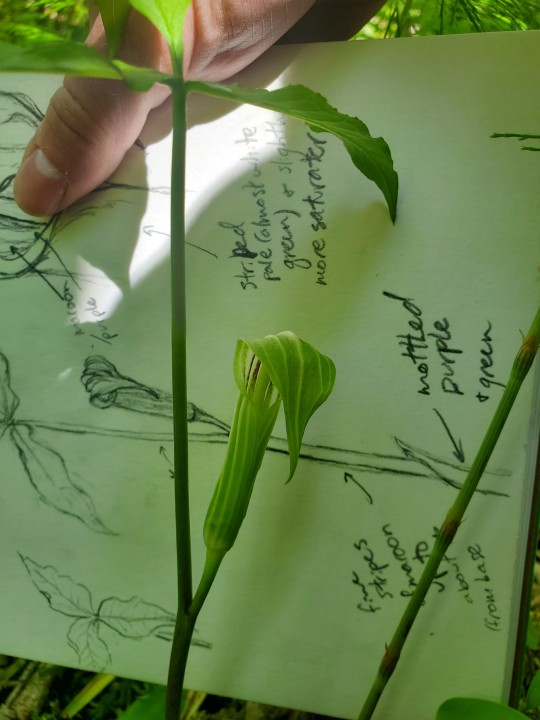

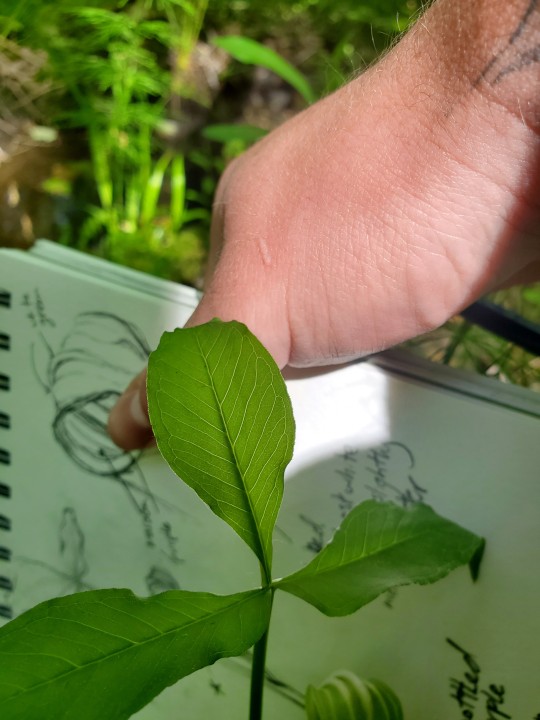
Today's plant is Arisaema triphyllum, also known as Jack-in-the-Pulpit. (photos are mine)
A. triphyllum is actually a species complex of four (or five, depending on who you talk to) closely related species. All species are native to Eastern North America and are found in deep, moist soils rich in organic matter. This group is still undergoing lots of debate in the taxonomy world, and the exact grouping and lineages are not fully known.
This species complex is part of the family Araceae, which is an incredibly cool (in my opinion) and diverse family that predominantly lives in the tropics of South American and eastern Asia.
Like most of its relatives, it attracts pollinators (at least in part) through deceptive scent compounds, which are volatilized and spread under exposure to heat. Unlike many of its relatives, Jack-in-the-Pulpit does not appear to utilize thermogenesis (active metabolic heat production) in its flowering parts to achieve this--it is posited that absorbed heat from the sun is sufficient for them to release these compounds! (Barriault et al. 2009)
Another trait it shares with almost all of its relatives is a very particular defense strategy: tiny, tiny knives. Its shiny red fruits might look tasty to some, but beware: the sensation of biting into it has been described by those brave (read: foolish) souls who've tried it as "like chewing glass."
This sensation is caused by tiny daggers of crystalline calcium oxalate (called raphides) being forcibly ejected from their cells right into your tender mouth parts by the force of your own chewing. Now that's what I call retribution!
76 notes
·
View notes
Text


Someday I hope to see this plant - our Wednesday's weed - in its native range in eastern Europe and north central Asia, because it's a shame something so pretty does so much damage! If you live in the American west you're probably familiar with this plant, Halogeton glomeratus, called saltlover. It can grow in disturbed areas where native plants struggle to take hold, and is perfectly happy growing in salty, briny, and alkaline locations. Once it's taken hold, it's really hard to fully remove, because it produces a lot of seeds and concentrates mineral salts in such a way that it makes its surroundings inhospitable to other plants. Worse, it's very toxic to livestock like sheep, and has killed entire herds in the past.
I found this plant at Dead Horse Point in Utah, USA. It's a little more plain when it's not flowering or going to seed, looking more like an amaranth/pigweed.
51 notes
·
View notes
Note
I agree with 4119 for the most part
But the thing with race is that it is almost always done with the intent of erasure or "fixing"
It's never "I wanted to explore this character as if they had a different ethnic background in this setting"
It's always "this character would look BETTER with this specific skin color and that's all I'll add to them and ignore all other culture aspects I could give the character relating to their skintone because I actually don't care about representing different people. I just want to be viewed as inclusive and unproblematic by my peers and I do that by changing the characters skin and nothing else because all I care about it what skin color people have. Also I attack others for calling me out on this by telling them all they care about is the characters skin and asking why they care so much that I made the character with *x* skintone. Ect. Ect. Ect."
Listen we wouldn't have so much problem with this if people were actually creative about it.
There's nothing and I mean NOTHING wrong with wanting to explore a character with a different skin tone or culture or whatever.
It's when people have this attitude about it like the character is somehow better in someway for having an either lighter or darker skin tone. And yes I'm talking about both. Because both whitewashers and blackwashers do the exact same thing and have the exact same arguments as to why they think it's acceptable to racewash when they are both wrong.
It's supposed to be like race bending. It's supposed to be a fun way to explore a character in different ways.
It is NOT meant to be a way to "one up" the "Whites/Blacks" OR to belittle the original design. Not even "edits" are good because there's actually zero thought or research going into them. I've seen a significant amount of edits for middle eastern characters who are paler or tanned being made to look extremely dark even though alot of middle eastern countries and ethnicities are pale or lighter in color making the characters original design accurate actually.
People get so mad at characters like that because of their moms basement preception of reality that they don't even know what people from other countries even look like.
Never have I seen an actually well thought out redesign of a character where they actually explore said character with a different ethnicity and culture. It's always "wow *x* looks a million times better now and is so accurate to real life"
And hell this 8snt even touching upon the fact that some people mistake tan characters from somewhere like Europe or America or east and south(south east?) Asia as black. Not even Indian or Spanish or even Mexican. Not even native American or anything else. Just black. And if that's not telling how horrible people who blackwash are. Literally no better than white washers.
Or the fact that so many people assume Asian characters are automatically white because they don't have "Asian eyes" or yellow toned skin. (or the fact that alot of people will redesign pale Asian anime characters with yellow skin and slanted eyes to make it more "realistic" which as an Asian myself I consider that to be damned fucking racist)
There are ways to explore race in characters. There are ways to do so respectfully and without belittling the original ethnicity of the character. But that's not what people do. People just want to express their internal racism and prejudice and narrow and ignorant views on the world and it's people without being criticized by their peers.
Trust me I would not mind if someone took a character and decided to explore how their life would unfold and how characters might treat them (depending on how the world and it's people view such ethnicities) under a different ethnicity or culture. I would not mind if someone just wanted to see how they could design a character and their meanings but using a different culture. (like how two different flowers could have the same meaning. Or how different colors have different meanings. A character with the colors meaning passion might be designed with a different color of the same or similar meaning in a different culture), or how a character might choose a different path in life due to their culture or how they chose the same path despite their culture. there is just so much you can do but all people care about is the fucking skin and "how much better the character is now" with a different skin.
I hope that makes sense.
Posting since this is a reply to a previous problem.
55 notes
·
View notes
Text
January 9
Today's flower is bloodroot, scientific name Sanguinaria canadensis
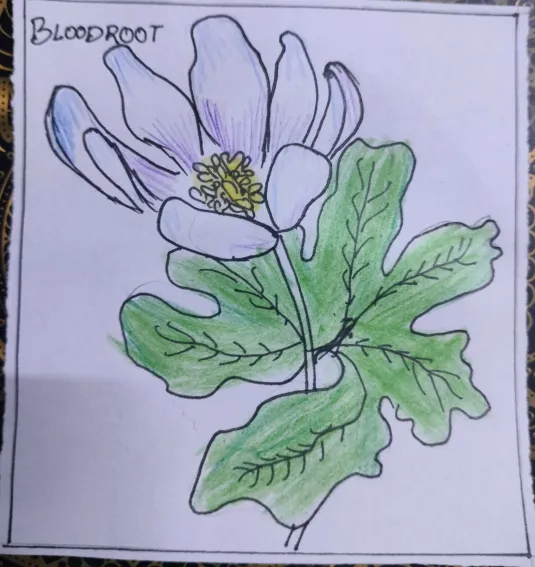
It is also known by the names of bloodwort, canada pucoon red root and black paste.
It is native to the eastern parts of USA and Canada. It's roots release a red juice when cut, giving it it's name.
It is used by many Native American tribes as a source of dye. i can't find any symbolism that I can corroborate sorry
21 notes
·
View notes
Text
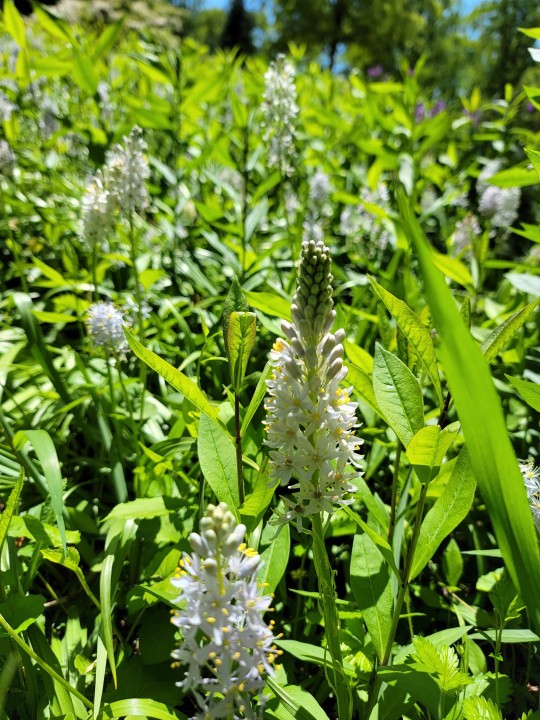


Eastern Camas in a Meadow - May 6th 2023
#camassia scilloides#eastern american native flowers#camas#nature#meadow#delaware#mt cuba#original phography#photographers on tumblr#spring
16 notes
·
View notes
Text
🦇 Ever wondered why Asagiri Gen is sometimes compared to a bat?
Me too, so I did some research! :)
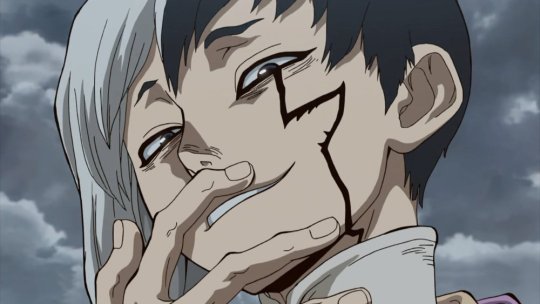
Firstly: the origin.
The usage of "bat" to describe Gen seems to mainly be in the first half of the series, and it's not a nickname given by only one person. Several people use it, including Gen himself.

Chronologically, the first instance was when Gen wandered back to the science shed alone after they'd completed the Sulfa drug, as he wasn't allowed inside the village. This happens in chapter 40/episode 15.
The Japanese word for bat is コウモリ (koumori).



However if you were watching either the English dub or reading the manga, this reference would have been completely gone! Instead, Gen refers to himself as an "opportunist", and the dub replaces "bat" with "rat".
The next instances were both during the katana fight against Hyoga, in chapter 48/episode 18. First, Kohaku calls him a bat after she assumes he'd gone and betrayed them.
(In Japanese, bat can also be spelt as 蝙蝠, and is pronounced the same way)

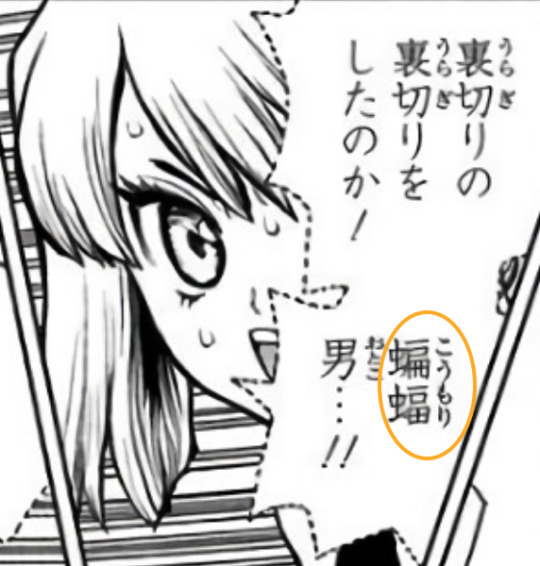

Again, the dub replaced "bat" with "rat", and the English manga translation uses opportunist instead.
The final instance I found was from Hyoga a short while later, when he gets betrayed by Gen, but for real this time. Both Kohaku's and Hyoga's usages are very negative and insulting, especially in the subs.
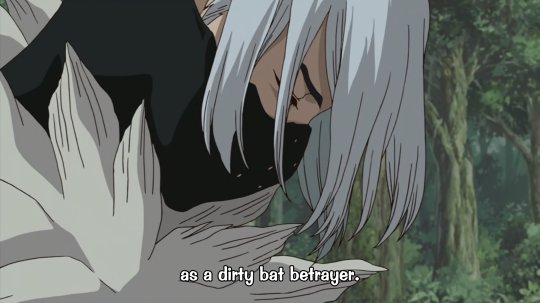

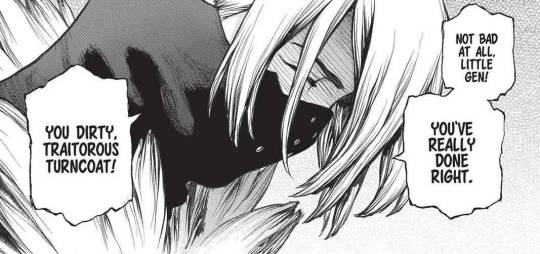
(For completeness again, I'm adding Hyoga's manga translation which is similar to his dubbed line, "filthy turncoat". As @DrStoneShots on Twitter said, Hyoga can be surprisingly eloquent lol)
So now the question is, why "bat bastard"? Why not "slithering snake" or "wriggly worm"? They've all got the same negative connotation of a crafty conman, right?

Let's start with the western view of the bat. Normally they're associated with Halloween, and thus remind us of things like darkness, death, witchcraft, and malevolence.
Native Americans consider them tricksters as well.
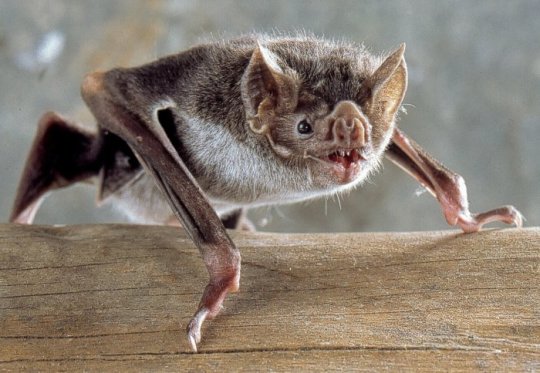
So far it sounds like it's suiting Gen's initial malicious mentalist persona quite well. I mean, he died, came back to life, uses poisonous flowers for his tricks and tricked Magma into thinking he'd die if he took so much as a single step.
…But then why call yourself a bat?

As it turns out, the symbolism associated with the bat in China and Japan is slightly different. Up until the 20th century, bats were popular in Japan thanks to influence from Chinese culture, where they are seen as a symbol of happiness, good fortune, a long life and good luck.
(Side note: I wonder if bats being associated with good luck, and therefore Gen by extension, is a narrative foil for Senku's extraordinarily bad luck?)

Now that we have both the bad and good of bats, why does the translation of bat->opportunist/turncloak arise when neither the western nor eastern interpretations mention anything about it?
Turns out, it's actually from one of Aesop's Fables, "The Bat, Birds, and The Beasts".
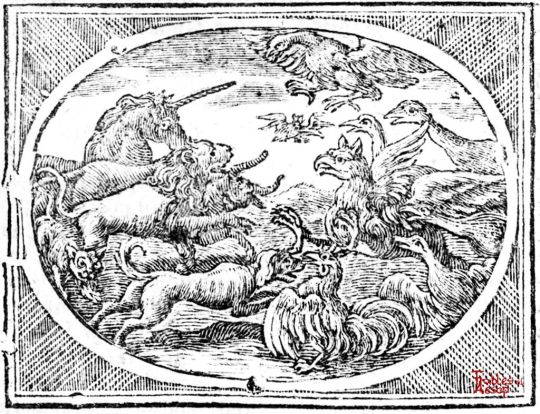
If you're not familiar with the story: the Birds and Beasts were fighting, and asked the Bat which side they were on, as they could both fly like the Birds and were furred like the Beasts. The Bat, uncertain, fought on both sides—choosing whichever was winning at the time.
The result was that afterwards, the Bat had no friends as they'd betrayed both sides several times, and ended up getting attacked by both the Birds and the Beasts, who now had a common enemy.
The alternative ending is that the Bat was not allowed to partake in the peace party.
Sound familiar? On several occasions, especially early on in the series, Gen felt like he had to keep a certain distance away from everyone, otherwise he'd get injured. He kept himself closed off and his true intentions hidden to stay safe. (Although he still got stabbed…)

The good news is that this particular bat's story ends happily, and with a whole kingdom's worth of friends. He learnt to open up and devote himself to a cause, even though it was risky to himself. His selfishness turned into selflessness when it truly mattered.

End of thread!
This was actually a request from @obviously6969 (on Twitter), who wanted me to find out more about Gen + bats! Now the only question is, can someone relate Gen to the Miracle Cave via bats… 🤔🦇
44 notes
·
View notes
Text
So speaking of plant variability and specifically Coreopsis lanceolata (lanceleaf tickseed), mine have had an interesting development:

Exhibit A
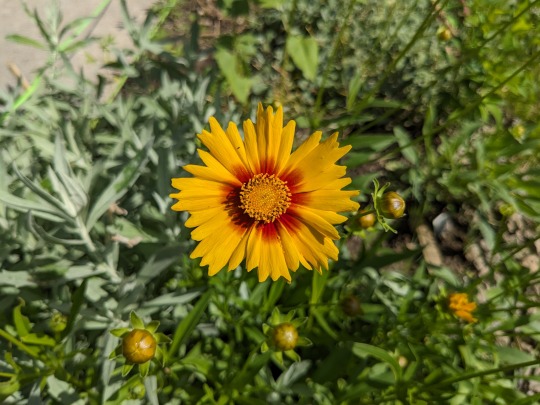
Exhibit B
This is new. They've never looked like this before, and indeed all of the rest of the currently open flowers look like this:
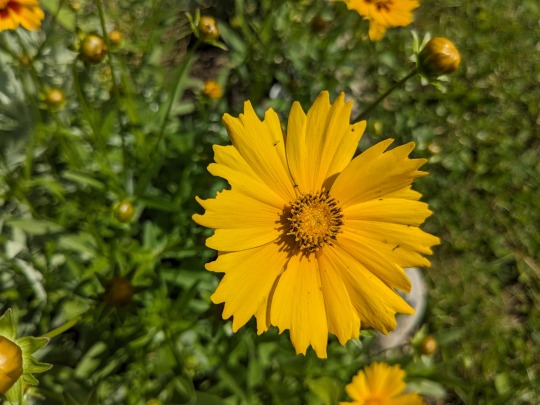
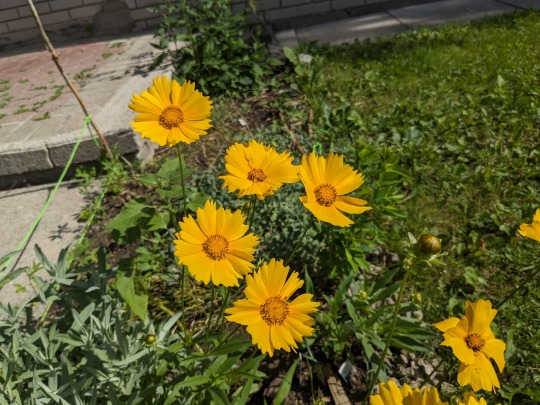
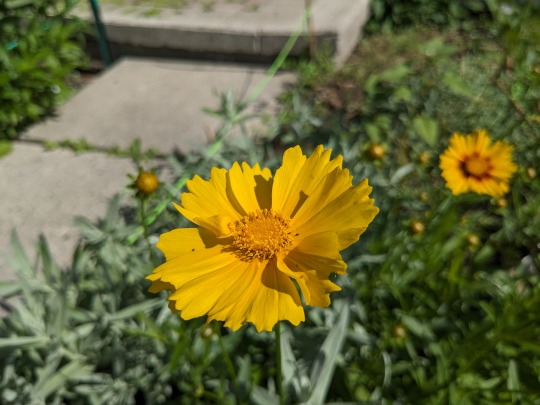
Exhibits C-E
Now, many Coreopsis varieties you'll find in the garden centre will have that red inner part but you don't typically find it on the regular plants. It's a mutation. These flowers are readily pollinated and many of the current plants growing are seeded from my original plant, which itself is still very much alive. And this tells me one of two things has happened.
1) Somewhere in the neighbourhood, someone has planted the garden variety and it has hybridized with mine. I don't mind this too much since as far as I can tell the garden varieties are all cultivars of native species.
2) It's just a spontaneous mutation! Which is cool as hell. And I mean the first to occur with such colouration probably was a spontaneous mutation, which a gardener or whomever thought looked cool so kept breeding it that way. I will not be doing that, they can do it themselves if they so wish, but very neat nonetheless.
#Coreopsis lanceolata#lanceleaf tickseed#flowers#mutation#gardening#native plants#North American native plant species#native plant garden#native plants of eastern North America#Carolinian Canada
1 note
·
View note
Text

disabled people are beautiful!!!
(image description below the cut--it wouldn't fit in alt text!!)
a drawing of 15 disabled people on a yellow background with a light pink floral pattern. from left to right:
1. a fat white person whose left (their left) arm ends before the elbow. their right arm is on their hip, & they are smiling. they have short red hair, a yellow dress with white flowers, white hoop earrings, and black heels. they also have moles and are blushing.
2. a chubby middle eastern woman wearing a light pink embroidered abaya kaftan style robe and a slightly darker pink hijab. the robe's embroidery is delicate mauve vines around the sleeves, and two matching vines down the front. the woman has a german shepherd service dog with her. the. dog is sitting to the viewers right and has its tongue out, and is wearing a service dog vest. the woman is holding the leash to the dog in her right hand, and has her left hand on her hip. she is wearing pink slippers with a mauve gem on the top.
3. a black, bald, thin, nonbinary person with several facial piercings and earrings standing with their left arm lower than the right, slightly tilted backwards, arms hanging by their sides. they are wearing pink sandals, knee braces, a compression glove and elbow brace on their left arm, & have on blue shorts and a bright pink crop top that says 'FUCK ABLEISTS' (peep that underboob 👀 [side eye emoji]).
4. a chubby south asian woman with white hair and a green striped cane wearing a pale green button up shirt with shoulder pads, dark green corduroy pants, and brown loafers. her posture is tilted a bit from scoliosis.
5. a thin east asian man with a facial deformity that affects his nose and makes his left eye lower than the right. he has wavy pink har that is long on top and short on the sides. he is wearing a white cropped tank top with lace at the neck-line, and loose, flowy green pants. his shoes are white with pink detailing. he is turned so his body faces the viewer's right side, but is looking at the camera with his hands in his pockets.
6. a curvy latine autistic person holding a yellow AAC/speech tablet in front of their chest. they have very long light blue curly hair and freckles, and are smiling with their eyes closed. they are wearing dark blue headphones, a yellow short sleeve shirt, a dark blue romper with bows on the shoulders, and yellow sandals.
7. a curvy disabled bed-bound native american person lying in bed on their side facing the viewer and smiling. they have their left arm folded under their head, & their right arm laying next to heir face. the bed is dark brown with blue and white patterned sheets and a fuzzy purple blanket draped over the person and a corner is touching the ground. the person has tan skin and shaved brown hair.
8. a thin black woman with vitiligo, and wavy lime green hair with baby hairs, smiling in a wheelchair with lime green wheels. she is tilting the wheelchair back in a wheelie position. she is wearing a high-neck, sleeveless, black top with a boob window; light blue skinny jeans; tall, black lace-up boots; and dangly earrings.
9. an east asian man who has dwarfism. he is standing with his left hand on his hip, and his right hand up in a peace sign. he has square glasses and long, blonde, curly hair. he is wearing a black turtle neck, orange pants, and black booties.
10. a tall, curvy, white woman with forearm crutches. she is holding the crutch to her right normally, & is resting her left elbow and knee on the left crutch. her hair is shaved and brown on the right side of her head, and on the left side she has lair down to her chest colored in a rainbow pattern. she is wearing a dress that is pale pink with a pale yellow confetti pattern, pale yellow converse, and blue socks.
11. a drawing of a chubby, blind, south asian man. he has short, flowy, gray hair, black sunglasses, black stud earrings, a green sweater, a long black skirt, brown shoes, a gold key necklace, and a white cane. he has his right hand in front of him holding the cane, and his left hand by his side.
12. a fat black person sitting on the ground. their right elbow is resting on their right knee. their left leg is tucked in front of them on the ground, and their left hand is supporting them. they have short pink locs with the sides of their head shaved. they have a cleft lip scar and some moles on their face. they are wearing a black bra with a sheer long sleeve shirt over it, green shorts, and pink booties.
13. a drawing of a chubby latine man with an afro, mustache, and beard standing with his right arm behind his head. his left arm is holding up the end of a red dress with a deep v-neck to reveal his left leg is a prosthetic. he has chest, armpit, and leg hair, and is wearing gold jewelry and black flats.
14. a drawing of a disabled, curvy middle eastern woman with a feeding tube going from her nose to a bag on a pole. she is wearing a green shirt with a foliage pattern, tan shorts, and black combat boots with purple socks. her hair is also purple, and she has several earrings.
15. a drawing of a chubby native american man on a light blue background. he is using a blue rollator and waving. he is wearing a pink striped vest and vibrant green bell bottoms with pink flowers. his hair is long and blue, and he has three tattoo lines on his chin.
#rain creates#disability#disabled#cripple punk#limb loss#service dog#hypermobility#facial deformity#wheelchair#dwarfism#bed bound#me/cfs#feeding tube#blindness#rollators#crutches#scoliosis#prosthetics#autism#aac device
42 notes
·
View notes
Text
so many of us haven't seen it
we don't encounter it, we can't imagine it, we can't get out of the tomb of apathy because we haven't seen the wonders just beyond their line of sight
I talk about this all the time, but it's because I think about it all the time
There are likely thousands of plants native to the area you live in, and chances are you have never even seen most of them, in your entire life.
Not even rare orchids that only bloom at midnight on a blood moon or some shit—regular flowers. Weeds. They have been systematically eliminated from every single place you ever set foot in, and you have to have a special hobby or line of work to ever even rest your eyes upon the flowers that used to bloom for no one on every hill, or in every valley, or beside every stream
There are a few hundred birds that live where I live. I have never seen most of them before. I have never seen a Kentucky Warbler, and I have lived in Kentucky for what...twenty years?
I have never seen a rosy maple moth. When I saw one on the internet, I didn't even think it was real.
I've become a deeply weird person over the past couple years. Tasting even a little bit of the Wonders changes you. I wouldn't have thought blue bees were real, or the fantastically rainbow-colored dogbane beetles.
I have seen the world beyond the wasteland, and that glimpse makes you crazy.
You or I may have never seen a truly mature tree. A fraction of a percent of the old growth forest of the Eastern USA remains. Once there were tulip poplars over 6 feet in diameter and sycamores well over 10 feet in diameter. Only a few remain, in secret locations. Imagine walking through a forest where the tree trunks are over 3-4 feet wide.
The forest where I work is 100 years old. That's a baby forest.
Knowing that, being aware of that, it's maddening.
Central Kentucky has disproportionately few endemic plants. Almost none. Central Kentucky was the first area west of the Appalachians settled by European colonizers. The Bluegrass was once described as having the most peculiar plant life anywhere in the East, but now, there are no species known that are unique to that area.
Colonization destroyed the canebrakes. (Did you know that we had vast forests of bamboo full of carnivorous plants?) The bamboo is barely hanging on. It destroyed the sycamores so enormous you could use the hollow center of one as a stable for animals. It introduced invasive grasses to feed cattle and horses. It destroyed the rich lush topsoil. Most of the ancient oaks were cut down or died when housing developments were built on top of their roots.
What happened to the endemic species, never recorded in books of herbs, never sketched by a European naturalist.
Either gone forever...or hiding in a sinkhole on a backroad somewhere, not even yet discovered.
So much has been lost for eternity. So much still could be lost.
Some days it's hard not to wail and scream. There are herbicides in your drinking water. When you spread honey on toast, you likely also spread neonicotinoid pesticides, which testing has confirmed to be present in something like 45% of honey. In many areas, insects are immersed in the presence of chemicals designed to kill them in every drop of water, every leaf, every square inch of soil.
When games, animations, and illustrations envision the outdoors, they cover the ground with a short, uniform carpet of green, because that is what we see, no matter where we go: turfgrass cut by a lawn mower. Where I live, there are no natural environments that resemble this, remotely. The closest thing we have to turf-forming grass is our wealth of native sedges, most of which are rare or endangered.
I talked to a man who had devoted his life to studying the American bamboo, Arundinaria gigantea, and he had never seen a canebrake larger than 200x500 feet. Canebrakes once covered ten million acres, and now the bamboo exists in short, straggly clumps instead of dense bamboo forests up to 40 feet tall.
I want to cry and scream. The grief will tear me to pieces. I live in a post-apocalyptic wasteland, surrounded by people who can't even grieve, because they have been so completely severed from everything that was lost that they don't even know it was real.
It hurts. It hurts, and we have to live with it. It hurts, and the grief is all-consuming.
There is the agony, and there are the Wonders. Both are true at the same time. It is because nothing around us is standing still; everything in nature is always moving, iterating, becoming. Something is pulling and nudging at our species, urging us to move, to iterate, to become.
So much has been lost. Even more is not lost.
The trees, the bamboo, the sedges, the Kentucky warblers and rosy maple moths.
They are not lost. We are lost.
This is the hard part. The grief is hard, but this is somehow harder for us. We are lost, and it is time to come home.
Not to a physical place, but to a way of living: interconnected, mutualistic, interdependent. Symbiosis. In the forest, no one is separate from anyone else, everyone is linked and dependent on the community. Trees help each other, they support each other, they protect and shelter and feed one another and all living things, and together they are a forest. I don't really consider myself religious, but I have to reserve something in my head for how it felt to realize what Forest was.
When I noticed the little plants popping up in the sidewalk cracks and gravel paths, the tough weeds holding on in the lawns and pavement, something in my brain began to change dramatically and permanently.
They're still here. The trees. Even in the pavement and lawns. The dandelions have come, adapting rapidly, helping the bees hold on. The wildflower seeds are still sprouting in this depleted ground. Waiting for us to recognize them. Life is everywhere. The Forest is everywhere. It felt like they were waiting. We're here. We have not abandoned you. We are resilience, persistence, survival, adaptation. This is not death. This is Chaos. Come home. Come home. Come home.
I saved little plants from the roadside and tended them in plastic cups. I didn't think it would work. I don't know why I tried. I was acting as something bigger than only myself, responding to a call that moves throughout all of nature. But they survived, and growing and tending to my little plants and trees, I—understood.
I don't know if I believe in God, but I believe in Something, whatever it was that seemed to whisper like a secret: Welcome home, Caretaker.
And honestly, truth shone through then from relics of religion I hadn't touched in ages; God put Adam in a garden, not a suburb, a mall, or a Walmart. This is who you are. Not a Consumer, but a Caretaker.
And when the threat of the Flood loomed, God told Noah to start building a fucking boat.
In ecology, the plants we know as "weeds" are pioneer species: the first species to return to an area after a natural disaster or mass extinction. They survive in the harshest conditions, and prepare the land for regeneration. This is who you must become.
Look to the Dandelion—in just a few hundred years on this continent, Dandelion has risen to the highest calling of a Weed: first survive where the others can't, and then help the others survive. If the human species is to survive, you must be a weed species. You must adapt relentlessly, resist eradication, and protect and nurture other life forms by your very nature. You must be tough as nails, and make the world a gentler place through your survival.
Have you heard the saying that grief is love with no place to go?
That's the hard part.
We must grieve, but it is not yet time to grieve. It is time to love.
2K notes
·
View notes